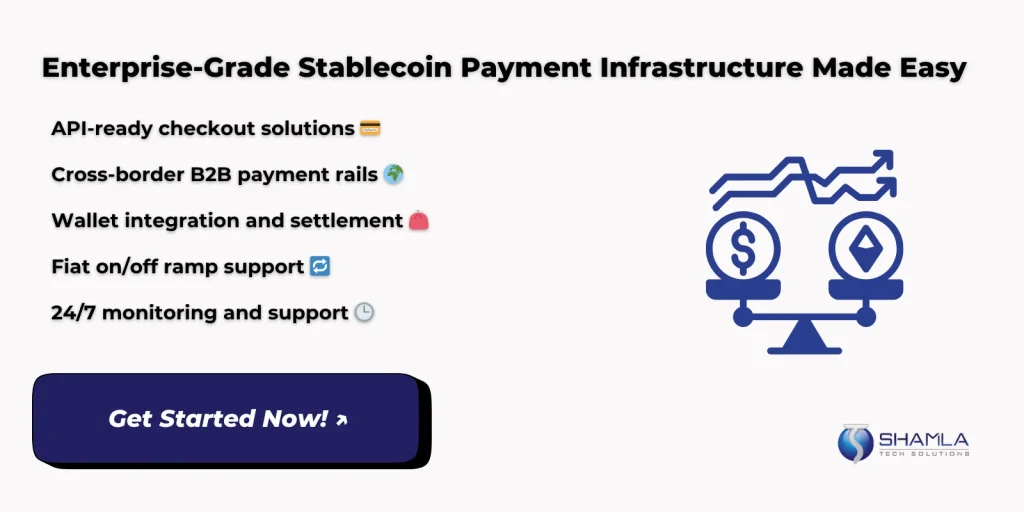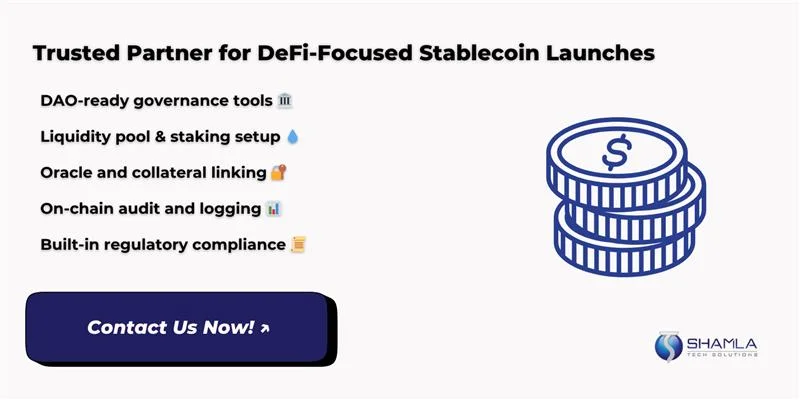Real-World Stablecoin Use Cases in Finance & Commerce
1. Global Money Moves
2. Lending and Borrowing Platforms
3. Online Sale Payments
4. Salary and Payout Systems
5. Trading and Liquidity Pools
6. Custom Coin and Service Builds
Stablecoins in DeFi and Yield Ecosystems
1. Lending, Borrowing, and Staking
2. Collateral and Liquidity Tools
3. The Rise of Yield Bearing Stablecoins
4. Popular Protocols and Platforms
5. Cross‑Chain and Multi‑Chain Integration
6. Development and Policy Considerations
Institutional Adoption and Payment Rails Using Stablecoins
1. Bank and Treasury Rails
2. Corporate Cash Management
3. Trade and Supply Finance
4. Embedded Fintech Services
5. Custom Builds and Expertise
Conclusion
Stablecoins power centralized banks and decentralized protocols, linking fiat rails and smart contract networks. Their use expands across global cross‑border payments, liquidity pools, on‑chain lending, and algorithmic reserves. Platforms integrate token swaps and automated market makers, so stablecoin use cases multiply, ensuring steady rails and instant settlement across modern finance.
Shamla Tech is a top stablecoin development company, guiding clients on how to create a stablecoin with robust collateral and smart‑contract frameworks. Our stablecoin development solutions include protocol audits, reserve tooling, and cross‑chain integration. Trusted by enterprises, we deliver secure, compliant coin launches with governance, audit logs, and scalable architecture.
Ready to build your own Stablecoin?
Let’s launch your Stablecoin project – Contact us today!






